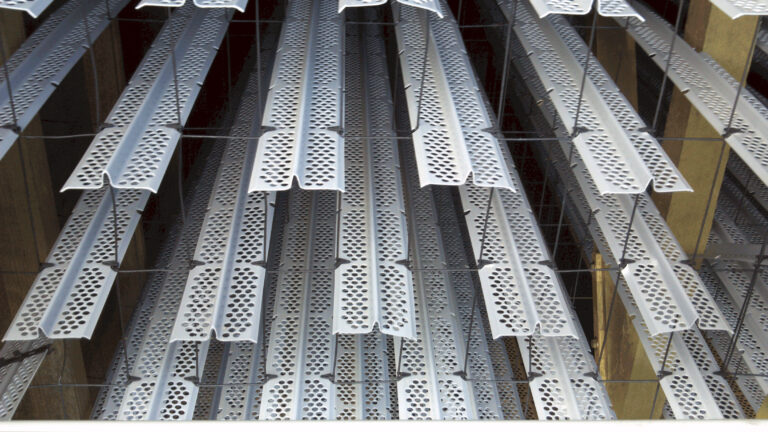Introduction
cooling tower fill material is crucial for enhancing the efficiency and effectiveness of a cooling tower. It facilitates the heat exchange process by increasing the surface area where water and air interact, thus improving heat dissipation. Selecting the right fill material can significantly impact the cooling tower’s performance, energy consumption, and maintenance requirements. This guide will provide a step-by-step approach to help you choose the best cooling tower fill material for your needs.
What is Fill media?
Fill material in a cooling tower refers to the components or media inside the tower that facilitate heat transfer between the water and the air. Its primary function is to increase the surface area over which water and air come into contact, thereby enhancing the cooling process. Honeycomb PVC Fills
Step 1: Understand the Types of Fill Materials
- Film Fill: Consists of thin sheets of plastic that create a thin film of water over the surface, enhancing heat transfer through a large surface area. It’s commonly used in counterflow cooling towers.
- Splash Fill: Features thicker, often corrugated plastic or wood panels that cause the water to splash and increase surface contact with air. Suitable for crossflow cooling towers and environments with high fouling potential.
- Cellular Fill: Made of honeycomb-like structures that promote effective water distribution and air flow. It is used for both counterflow and crossflow designs and is known for its high thermal performance and low resistance to air flow.
Step 2: Evaluate the Cooling Requirements
- Heat Load: Determine the heat load that the cooling tower needs to handle. High heat loads may require fill materials with better thermal performance and greater surface area.
- Water Quality: Assess the quality of water being used in the cooling tower. Water with high sediment or scale formation might require splash fill or other materials designed to handle fouling and scaling.
- Environmental Conditions: Consider the local climate and environmental conditions. For example, in areas with high humidity or airborne contaminants, choosing a fill material with resistance to corrosion and fouling is essential.
Step 3: Consider Material Durability and Maintenance
- Material Durability: Select fill materials that are resistant to UV radiation, chemical exposure, and temperature fluctuations. Common materials include PVC, polyetherimide (PEI), and fiberglass.
- Maintenance Needs: Opt for materials that are easy to clean and maintain. Materials with smooth surfaces or those that resist fouling will reduce the frequency of maintenance and cleaning.
Step 4: Consult with Experts
- Professional Advice: Seek advice from cooling tower experts or engineers who can provide insights based on your specific requirements and operational conditions.
- Case Studies: Review case studies or testimonials from other users who have installed similar fill materials to understand their experiences and performance outcomes.
Step 5: Analyze Heat Transfer Efficiency
- Thermal Performance: Evaluate how effectively the fill material facilitates heat transfer between the water and air. Materials with high thermal performance will improve the overall efficiency of the cooling tower.
- Surface Area: Consider the total surface area provided by the fill material. Larger surface areas allow for better heat exchange and improved cooling efficiency.
Step 6: Evaluate Water Distribution Characteristics
- Uniform Distribution: Ensure the fill material promotes uniform water distribution across its surface. Even distribution prevents hotspots and ensures efficient cooling.
- Flow Distribution: Assess how well the fill material handles variations in water flow rates. Materials that maintain performance across different flow conditions will offer more consistent cooling.
Step 7: Evaluate Long-Term Performance and Longevity
- Life Expectancy: Assess the expected lifespan of the fill material. Durable materials with longer lifespans will reduce the frequency of replacements and associated costs.
- Performance Over Time: Consider how the material’s performance might change over time due to factors like fouling, scaling, or exposure to harsh conditions.
Step 8: Review Fire Resistance
- Fire Rating: Check the fire resistance rating of the fill material. In some applications, especially in industrial settings, it is crucial to choose materials that are fire-resistant to enhance safety.
Step 9: Investigate Manufacturer Support and Service
- Technical Support: Ensure that the manufacturer provides comprehensive technical support for installation, maintenance, and troubleshooting.
- Training: Look for manufacturers who offer training or guidance on the proper handling and maintenance of the fill material.
Step 10: Consider Environmental Impact
- Eco-Friendly Materials: Option for fill materials made from recycled or eco-friendly materials to reduce environmental impact.
- Energy Efficiency: Choose materials that contribute to overall energy efficiency in the cooling tower, potentially leading to lower operational costs and reduced carbon footprint.
Step 11: Analyze Compatibility with Water Treatment Systems
- Chemical Resistance: Ensure the fill material is resistant to chemicals used in water treatment processes, such as biocides or anti-scaling agents.
- Interaction with Water Treatment: Evaluate how the fill material interacts with your existing water treatment system to prevent potential issues with performance or material degradation.

